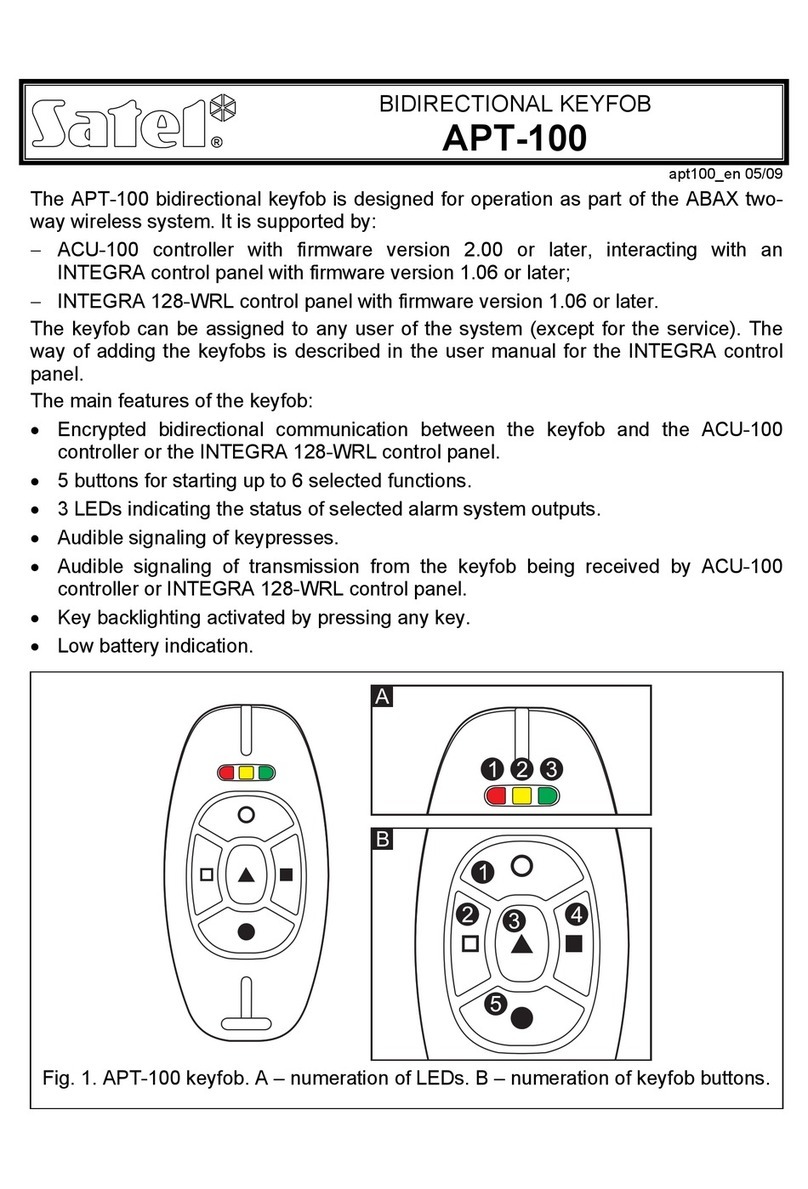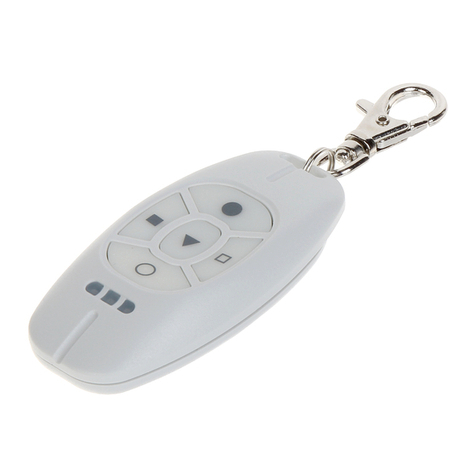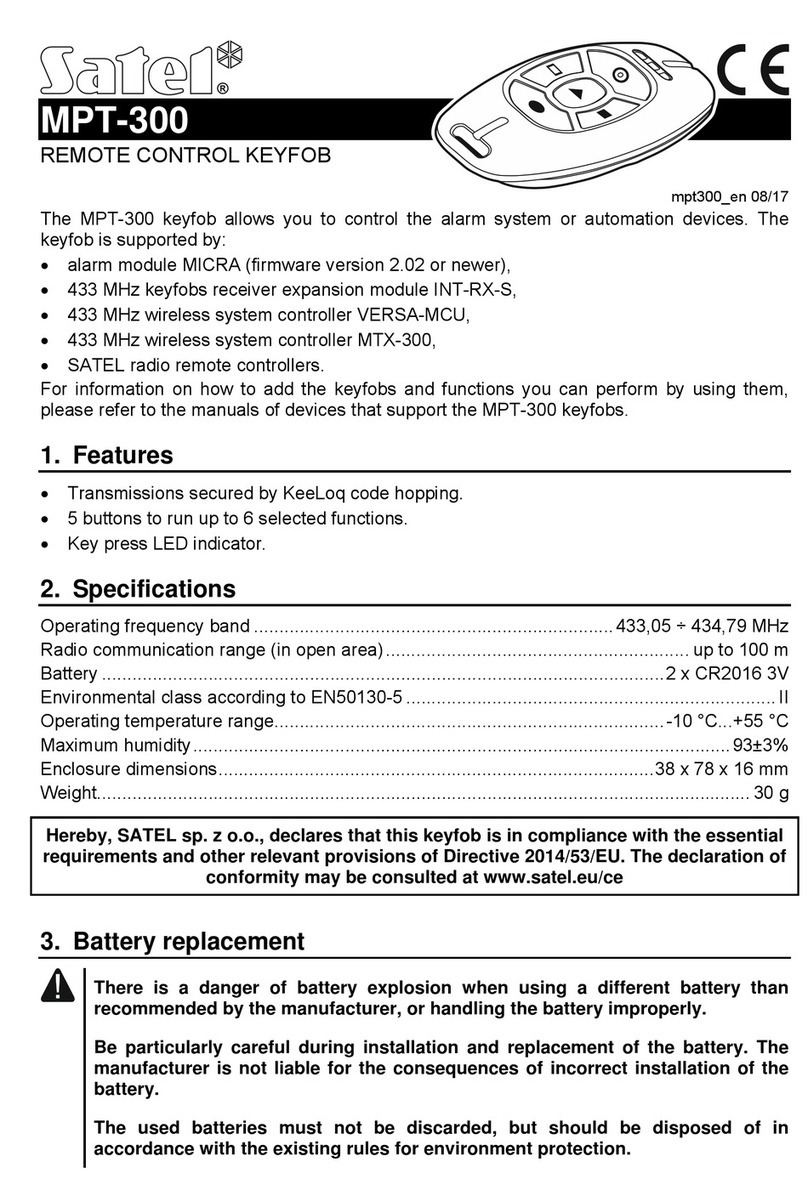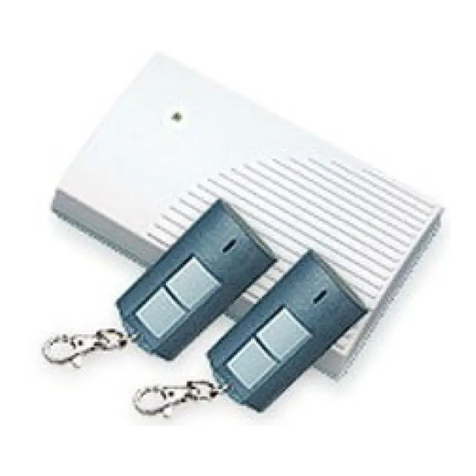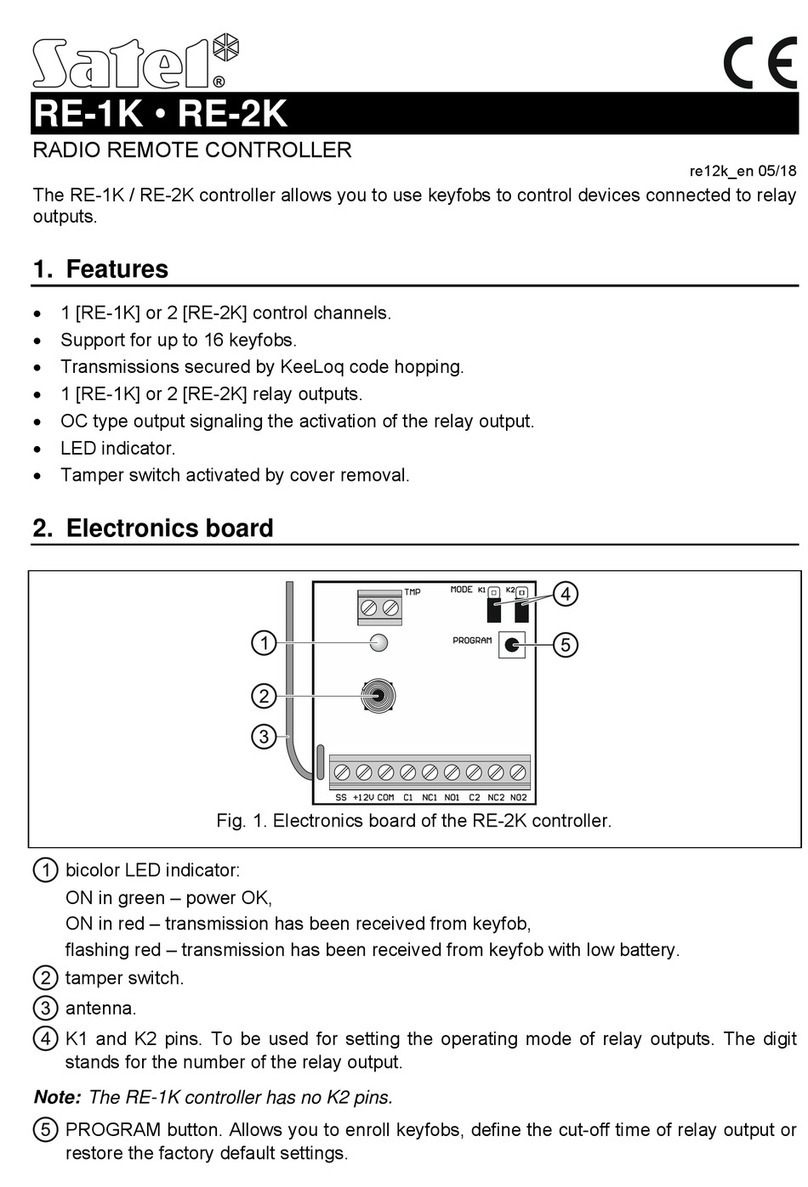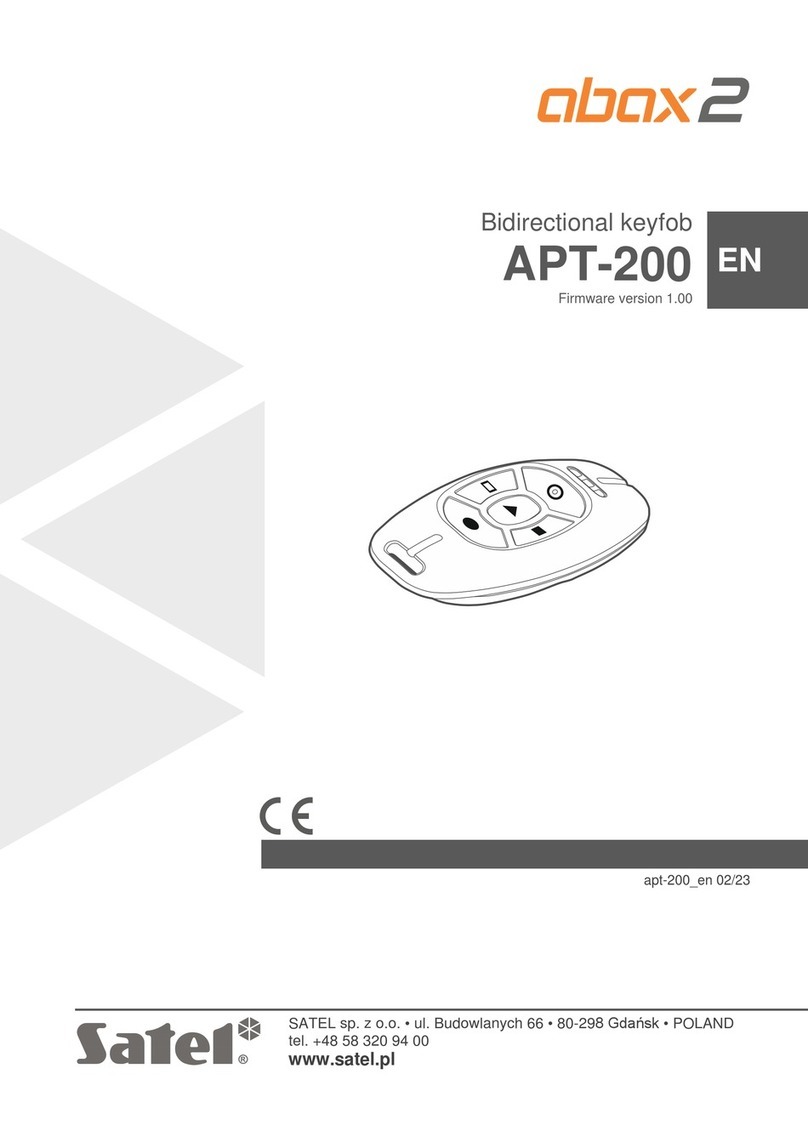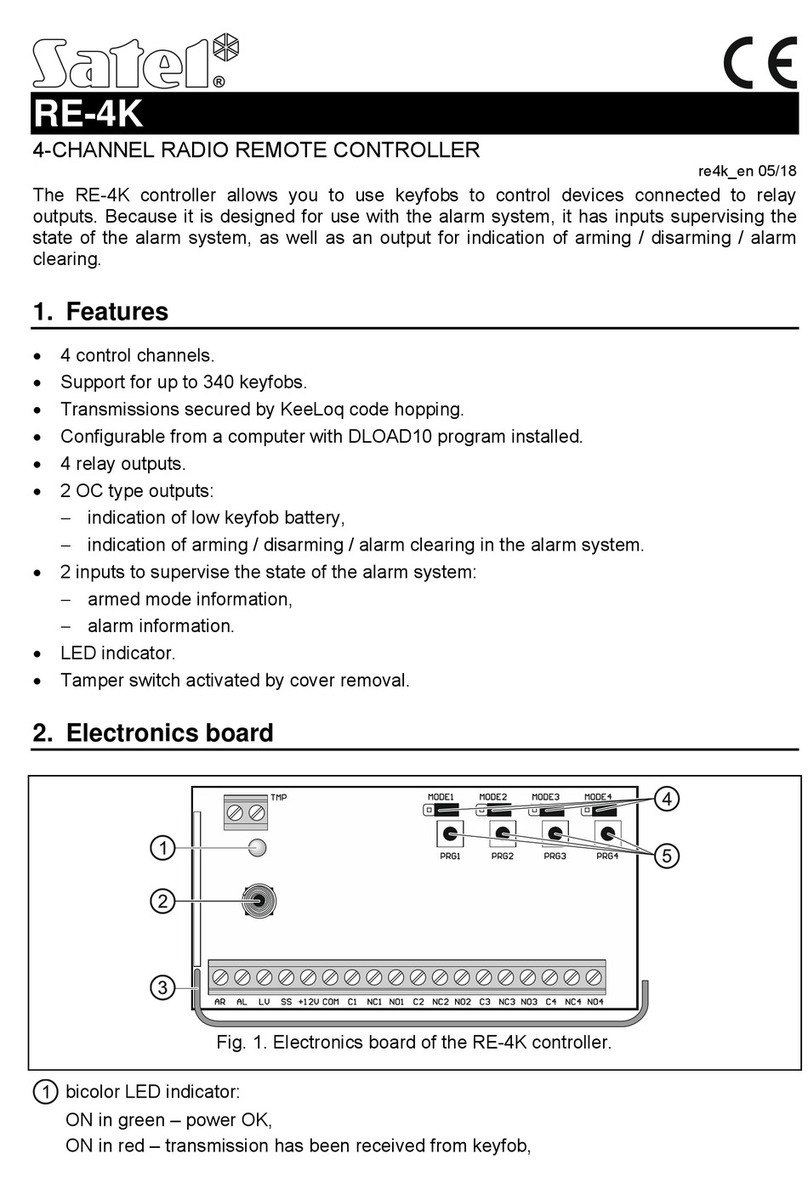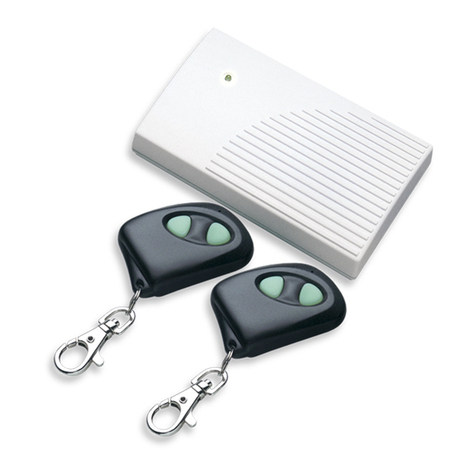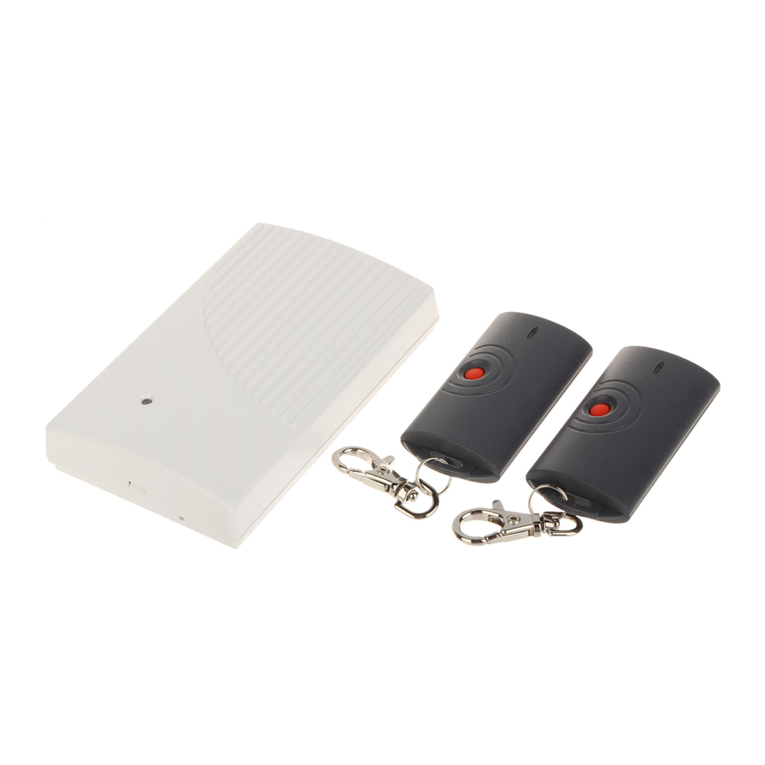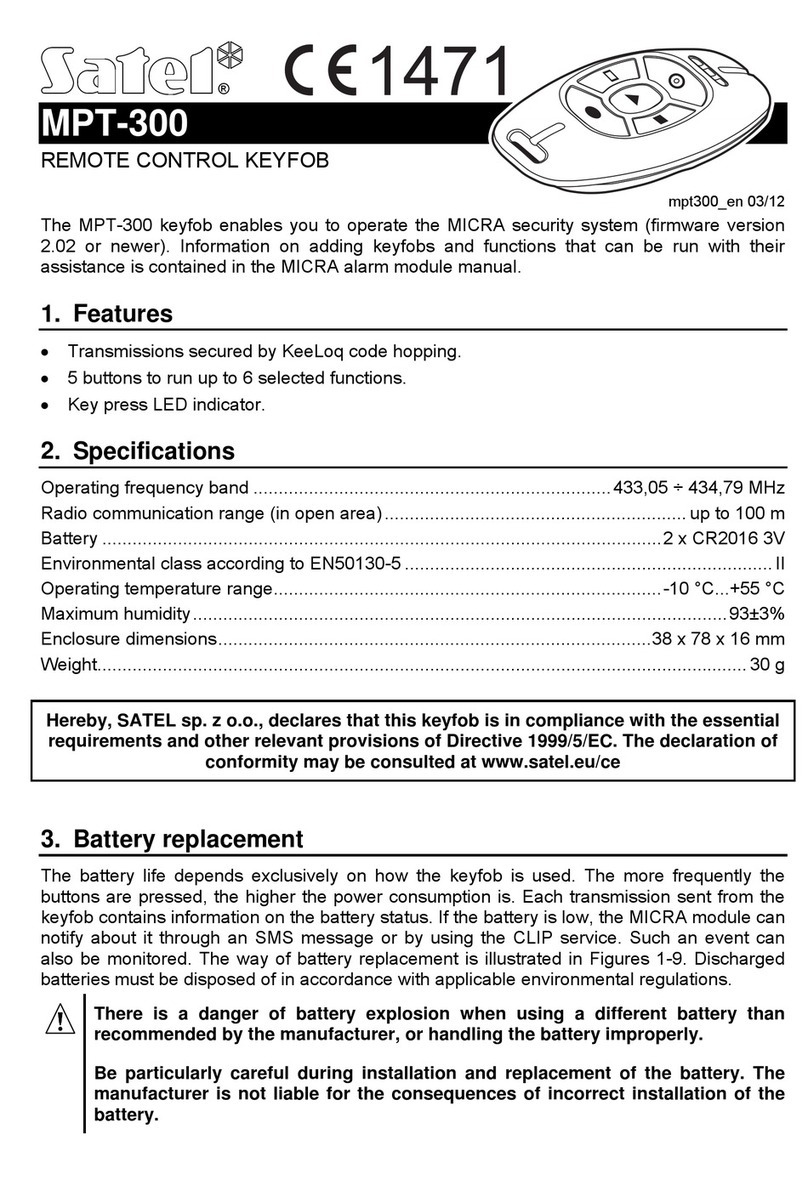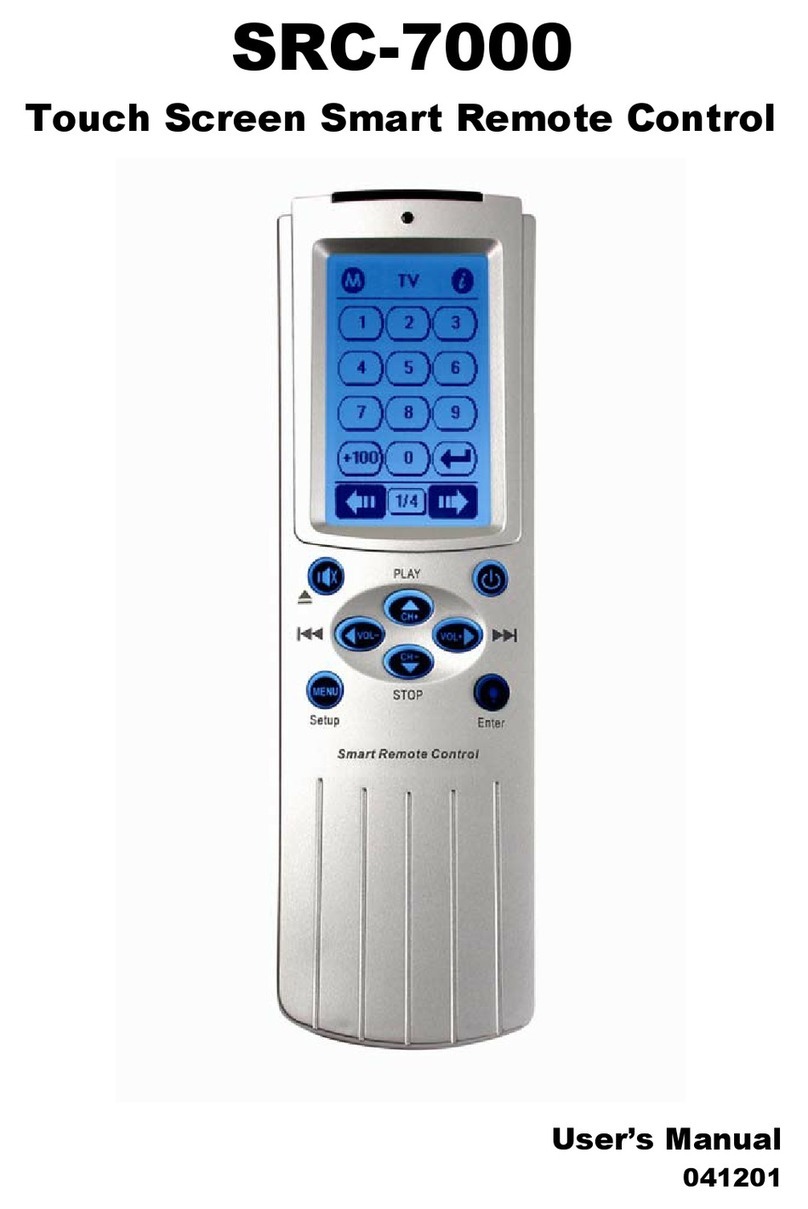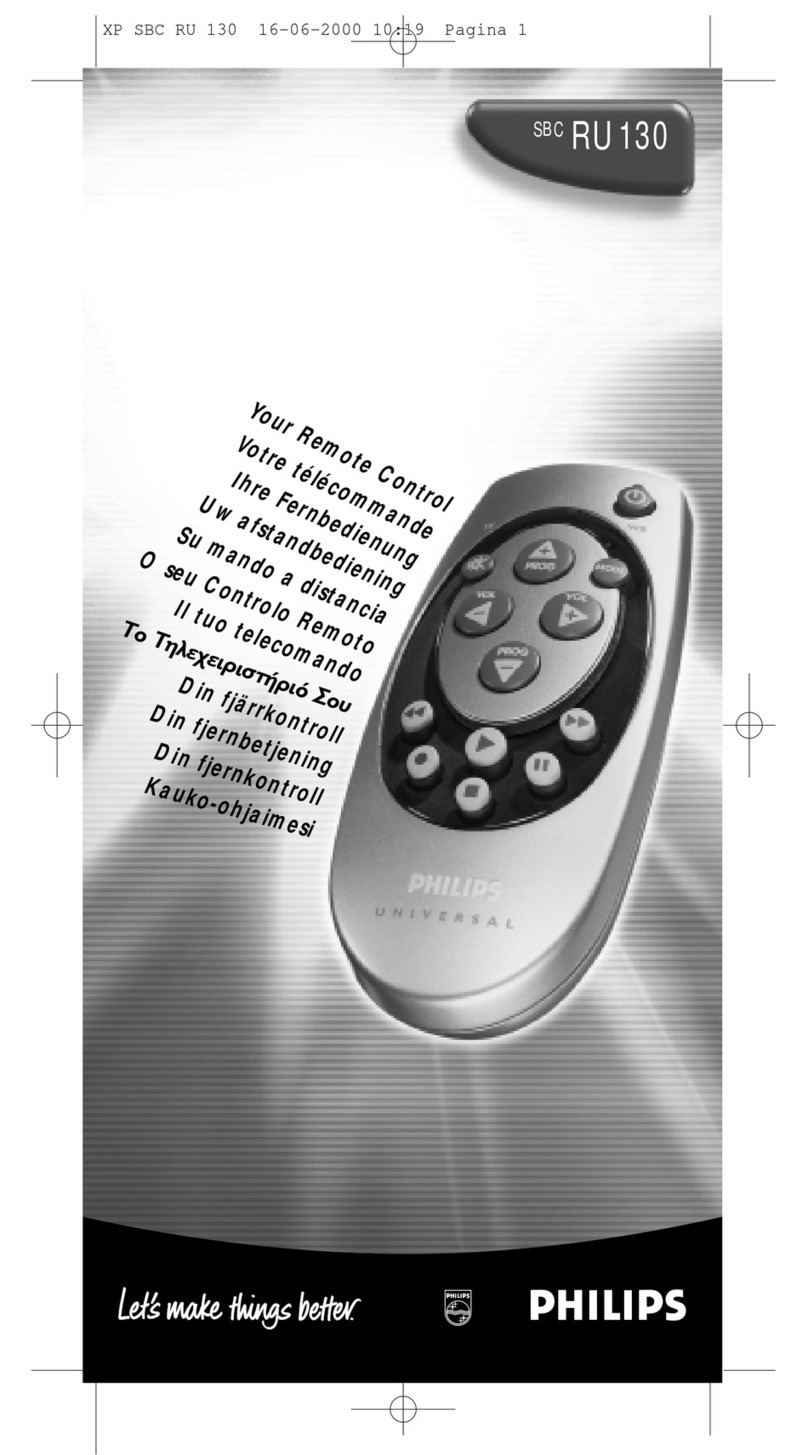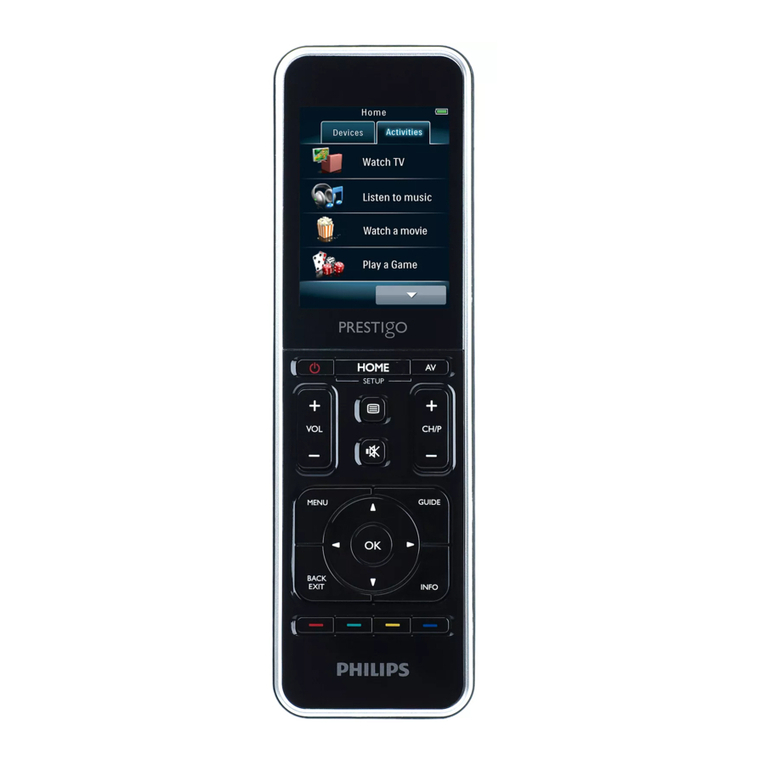
SATEL RE-4K8
OUT4 - armed mode indicator (type OC output – program +12V during on-time)
OUT5 - alarm on until canceled (type OC output – program +12V during on-time);
CTL - arming/disarming one or both partitions (FS 125);
Z1 - 24H silent zone (using the remote key button No. 4 will send a code to the
monitoring station).
5. Technical data
Range in open area ................................................................................................ up to 100m
(an obstacle between the transmitter and the receiver will reduce the device operating range)
Number of controlled outputs ...................................................................................................4
Supply voltage, rated .......................................................................................... 12V DC ±15%
Current consumption, minimum ...........................................................................approx. 13mA
Current consumption, maximum ..........................................................................approx. 65mA
Current-carrying capacity of relay contacts .......................................................................... 2A
Adjustment range of changeover time in monostable mode ....................................... 1 to 255s
Maximum voltage of relay contacts............................................................................... 24V DC
Current-carrying capacity of LV (OC) output .....................................................................50mA
Current-carrying capacity of SS (OC) output...................................................................500mA
Operating frequency range .......................................................................433.05 – 434.79MHz
Operating temperature range, receiver ..................................................................-10 to +50ºC
Operating temperature range, transmitter (remote key).........................................-20 to +55ºC
Housing dimensions........................................................................................... 72x118x24mm
Type of remote key battery, T4 .................................................................................... 23A 12V
DECLARATION OF CONFORMITY
Product:
RE-4K – remote control set
Manufacturer: SATEL spółka z o.o.
ul. Schuberta 79
80-172 Gdańsk, POLAND
tel. (+48 58) 320-94-00
fax. (+48 58) 320-94-01
Product description:A set of remote control set with coded transmission, having 4 controlled outputs,
operating in frequency band 433.05MHz – 434.79MHz. The set includes a +12V DC supplied receiver and
battery supplied remote keys (transmitters), type T-4. The device enables low-voltage equipment to be
controlled, including alarm control panels.
This product conforms to the following EU Directives:
R&TTE 1999/5/EC
This product meets the requirements of harmonized standards:
R&TTE: EN 300 220-1: v.1.3.1; EN 300 220-3: v.1.1.1;
EMC: EN 301 489-1: v.1.4.; EN 301 489-3: v.1.4.1
LVD: EN60950-1:2001
Notified body taking part in conformity evaluation: Identification No.: 1471
Gdańsk, Poland
2005-08-12
Head of Test Laboratory:
MichałKonarski
